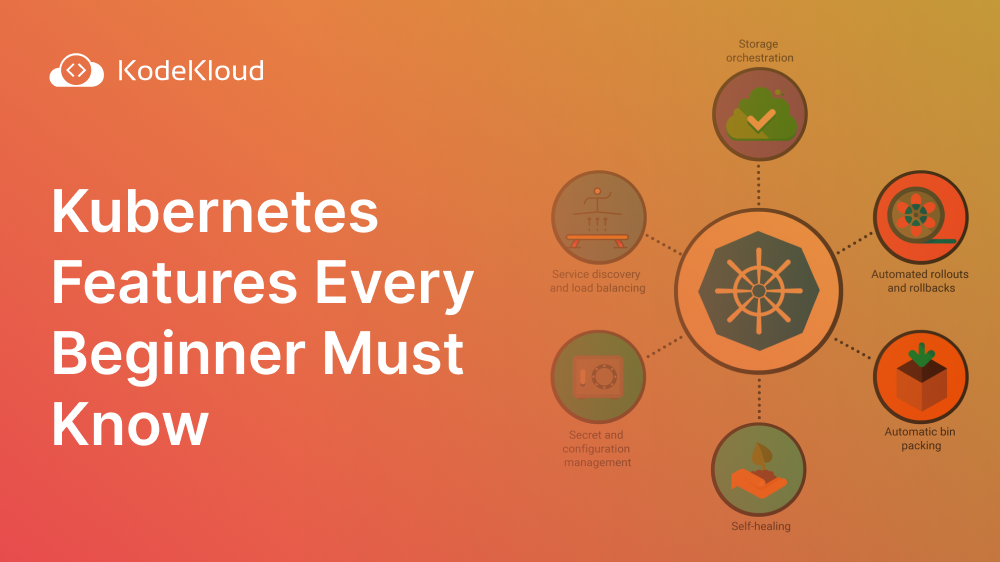Kubernetes is an open-source container orchestration platform that automates the deployment, scaling, and management of containerized applications. It was initially developed by Google and is now maintained by the Cloud Native Computing Foundation (CNCF). Kubernetes provides a platform-agnostic way to manage containerized applications, making it easier for developers to deploy and manage applications at scale.
With Kubernetes, developers can easily deploy and manage applications on any cloud platform or on-premises infrastructure. It allows organizations to achieve greater efficiency, scalability, and reliability in their application deployment and management processes. This has made it the de-facto container orchestration tool for companies using microservices.
Try the Kubernetes Services Lab for free

Try the Docker Run Lab for free
What are Microservices?
Microservices are a way of designing software applications as a collection of small, independent services that communicate with each other through APIs. Each microservice focuses on a specific business function and can be developed, deployed, and scaled independently of other services. This approach provides several benefits, including faster development and deployment cycles, improved scalability and resilience, and increased flexibility and agility.
In the microservices architecture, when services are scattered around, it’s essential to have service discovery and load balancing capabilities that Kubernetes provides. Today, we will see the important features of Kubernetes that make it unique and popular.
1. Service discovery and load balancing
When deploying microservices using Kubernetes, it's important to have a way to discover and communicate with the different services. Kubernetes provides a built-in service discovery mechanism that allows services to be exposed and accessed by other services within the cluster. This can be achieved through the use of Kubernetes services, which act as a stable endpoint for a set of replica Pods and can be used to load balance traffic across them.
In simple words, service discovery is the process of figuring out how to connect to a service.
Kubernetes service discovery finds services through two approaches:
- Using the environment variables
- Using DNS-based service discovery to resolve the service names to the service’s IP address
2. Storage orchestration
When deploying microservices using Kubernetes, it's important to also consider storage options for your application data. Kubernetes provides several built-in storage options, including persistent volumes and persistent volume claims, which can be used to provide reliable and scalable storage for your application data.
By leveraging Kubernetes storage capabilities, you can ensure that your microservices have access to the data they need to operate effectively and that this data is stored safely and consistently. Additionally, Kubernetes storage can be integrated with other cloud storage solutions, such as Amazon EBS or Google Cloud Storage, to provide even more flexibility and scalability for your application.
3. Automated rollouts and rollbacks
Kubernetes automated rollouts work by deploying new versions of an application without any downtime or disruption to users. If any malfunction occurs, Kubernetes can automatically roll back to the previous version, ensuring an uninterrupted user experience.
This feature also allows developers working on Kubernetes to define the state of deployed containers, systematically roll out changes with ease, and automatically rollback in case errors are detected.
4. Automatic bin packing
Kubernetes automatic bin packing works by intelligently scheduling containers onto nodes in a cluster, taking into account factors such as resource requirements, utilization, and availability. This ensures optimal use of resources and prevents overloading of individual nodes. Additionally, Kubernetes can also automatically scale the number of nodes in a cluster based on demand, further optimizing resource allocation.
5. Self-healing
Kubernetes self-healing works by constantly monitoring the state of containers and nodes in a cluster. If a container or node fails, Kubernetes automatically detects the failure and takes corrective action to restore the desired state.
The action can include restarting failed containers, rescheduling containers onto healthy nodes, or replacing failed nodes with new ones. The result is a highly resilient and reliable system that can recover from failures quickly and efficiently.
6. Secret management
When it comes to managing sensitive information in a Kubernetes cluster, Secrets play a vital role. These are Kubernetes objects that allow you to store and manage sensitive data, such as passwords, API keys, and TLS certificates. They are stored securely within the cluster and can be accessed by authorized applications or containers.
By using Secrets, you can ensure that your sensitive information is kept safe and that only authorized services can access it. This is important for maintaining the security and integrity of your Kubernetes environment.
Read more: What are Kubernetes Secrets?
With these features, Kubernetes offers a reliable and scalable platform for deploying and managing containerized applications. Kubernetes is still the undisputed champion in the game of container orchestration. More and more companies are looking for developers with Kubernetes’ knowledge and experience.
To start or advance your journey, ENROLL in our Kubernetes for Beginners Course.
.png)
Conclusion
Kubernetes is the talk of the town today, and every organization wants to embrace this modern cloud-native technology to be up to date with the ever-growing standards.
Since cloud-native tech adoption is growing daily, it is evident that Kubernetes will be in every company’s tech stack to manage their containers and workloads and keep them highly scalable and resilient.
More on Kubernetes:




















Discussion